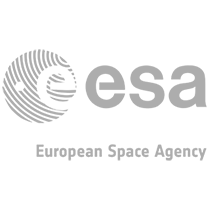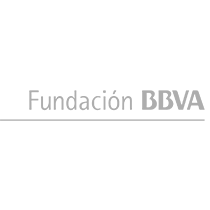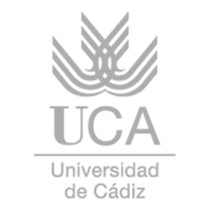Infographics

Satellite map of marine litter in the Mediterranean Sea

Satellite detections of litter windrows in the Mediterranean Sea

Satellite detections of litter windrows in the North Adriatic Sea
Satelite detections of liiter windrows in the North Adriatic Sea. Litter windrows are plotted as semi-transparent black dots proportional to their size. Main rivers are outlined

Litter-windrow detections in lagoons and other coastal singularities
Detections of litter windrows (LW) in lagoons and other coastal singularities. a, Mar Menor lagoon, Jucar River outlet and Cape Nao (Spain). b, Venice Lagoon and outlets of alpine rivers (Italy). c, Ambracian Gulf and Corfu island (Greece). d, Bardawil Lagoon and ship waiting area of Suez Canal (Egypt). The semi-transparent red dots represent LW detections accumulated during the observation period. Black dots in d correspond to the distribution of waiting ships on 25 March 2021. Zoomed areas are marked with pink rectangles on the lower map.

Satellite map of marine litter in the Mediterranean (cleared map)

Mediterranean map of marine litter, with rivers and drainage basin

People as major force for global litter monitoring

FLOATING MACROLITTER LOADING FROM EUROPE TO THE OCEAN

MARINE MACROLITTER LEAKED FROM EUROPE PER COUNTRY AND DRAINAGE BASIN CATEGORY
(a) Contribution per country and ocean region as percentage of total macro-litter released from Europe into the ocean . (b) Frequency distribution of floating macro-litter loading (items y-1) in relation to waste management rate and basin size. Colour code refers to countries’ waste management rates: blue - high (> 90%), green - medium (80-90%) and red - low (< 80%).

Top 10 items in the world´s litter
Top 10 litter items across seven aquatic ecosystems globally. Indecreasing order: Bags, plastic bottles, food containers and cutlery, wrappers, synthetic rope,fishing related, plastic caps and lids, strapping bands and industrial packaging, glass bottles and cans (beverage). The colours of the bars correspond to take-out/consumer (red), ocean & waterway (blue) and industrial & household (green) origins.

Material and origin of the litter across the major aquatic environments globally
Material, plastic type and probable origin of the litter found in the 7 major aquatic environments at a global scale. Each ring shows 7 segments, each corresponding to one of the environments investigated (titles are in the inner green ring). Concentric rings represent material types, plastic types and origin from the inside out, respectively. The relative sizes of colour portions in each ring segment represent the relative counts per environment. See the legend for the meaning of colours and chart structure. Smoking-related items include tobacco pouches, cigarette packages and lighters but not cigarette filters and cigar tips.

Top 10 litter items per ecosystem
Top 10 litter items in aquatic environments. Bars show mean percentages per environment, while the darker-coloured areas around the means show the individual data. Uncertainties of results were quantified through 10,000 Monte Carlo iterations in each environment. Bar colour relates to potential origin (take-out consumer, industrial and household, ocean and waterways).

Top 10 marine litter items in the 7 large world socioeconomic regions
Top 10 litter items in the nearshore seafloor of the seven large world socioeconomic regions. Bars show mean percentages per region; the darker-coloured areas around the means show the individual data. Uncertainties of results were quantified through 10,000 Monte Carlo iterations in each region. Bar colour relates to potential origin.

Conceptual model of the most likely predominant flows of the top litter items in the ocean
The arrows show the main connections among environments depicted as pools. The contribution in relative abundance into each environment is indicated with colour bars (see colour legend). White portions in the pools account for other items. Thick connectors indicate pathways with a greater contribution to the specific flow supplying each reservoir.

Arctic accumulation zone of plastic debris
Arctic accumulation zone of floating plastic debris is shown in red area, the summer extension of the polar ice cap in white area, and the schematic drawing of the North Atlantic Subtropical Ocean Gyre and the poleward branch of Thermohaline Circulation is shown by green curves. The colored dots indicate plastic concentrations at the sites sampled during the Tara Oceans circumpolar expedition.

Environmental conditions and plastic concentrations in the Arctic Ocean
(A) At-sea vessel density. (B) Human population. (C) Remote-sensed sea surface salinity. (D) Concentrations of floating plastic debris measured in the Tara Oceans circumpolar expedition. The polar ice cap is shown in white area, and the North Atlantic Subtropical Gyre and the THC poleward branch by green curves. The northern passage from Barents Sea to Kara Sea is zoomed in, with contour lines describing salinity (5-m depth). (E) Plastic concentrations as total weight (upper graph) and abundances per plastic type (lower graph) along the circumpolar track, from the Greenland Sea to the Labrador Sea, as indicated in the left map by the black line connecting the sampling sites. Salinity at depths of 5 and 20 m is also shown in the upper graph, and two dashed lines are used as reference for 34.5 salinity and the median of plastic concentrations measured in the accumulation zones of Subtropical Gyres. The Arctic Polar Circle (66.34°N) is marked in all maps.

Oceanic pathway of the plastic accumulations found in the Arctic Ocean
Pathways for the plastic accumulations in the Greenland Sea (upper maps) and the Barents Sea (lower maps) were obtained by simulations backward in time. Tracers were released at the locations of maximal plastic concentrations (red circles), and their surface transport was modeled for the previous years (1 to 3 years). Units are expressed as percentage of tracers. There is a close agreement between the modeled plastic pathway and the THC route described in the literature.

Typology and size distribution of the floating plastic debris in the Arctic Ocean, Subtropical Gyres, and Mediterranean Sea
In the pie charts, the percentages of plastic types are shown in relation to weight. The size distributions are presented in the lower graph. Horizontal axes indicate both log-transformed and nontransformed size limits of the bins. More information in the original paper.

First gloabal map of plastic waste in the ocean
Published in July 2014 in the Proceedings of the National Academy of Sciences of the United States of America, the map proved for the first time the existence of 5 large accumulation zones of floating plastic debris, one in the center of each of the ocean basins (North and South Atlantic, North and South Paciifc, and Indian Ocean).

© 2020 DESIGNED AND DEVELOPED BY INVISUAL.ES




